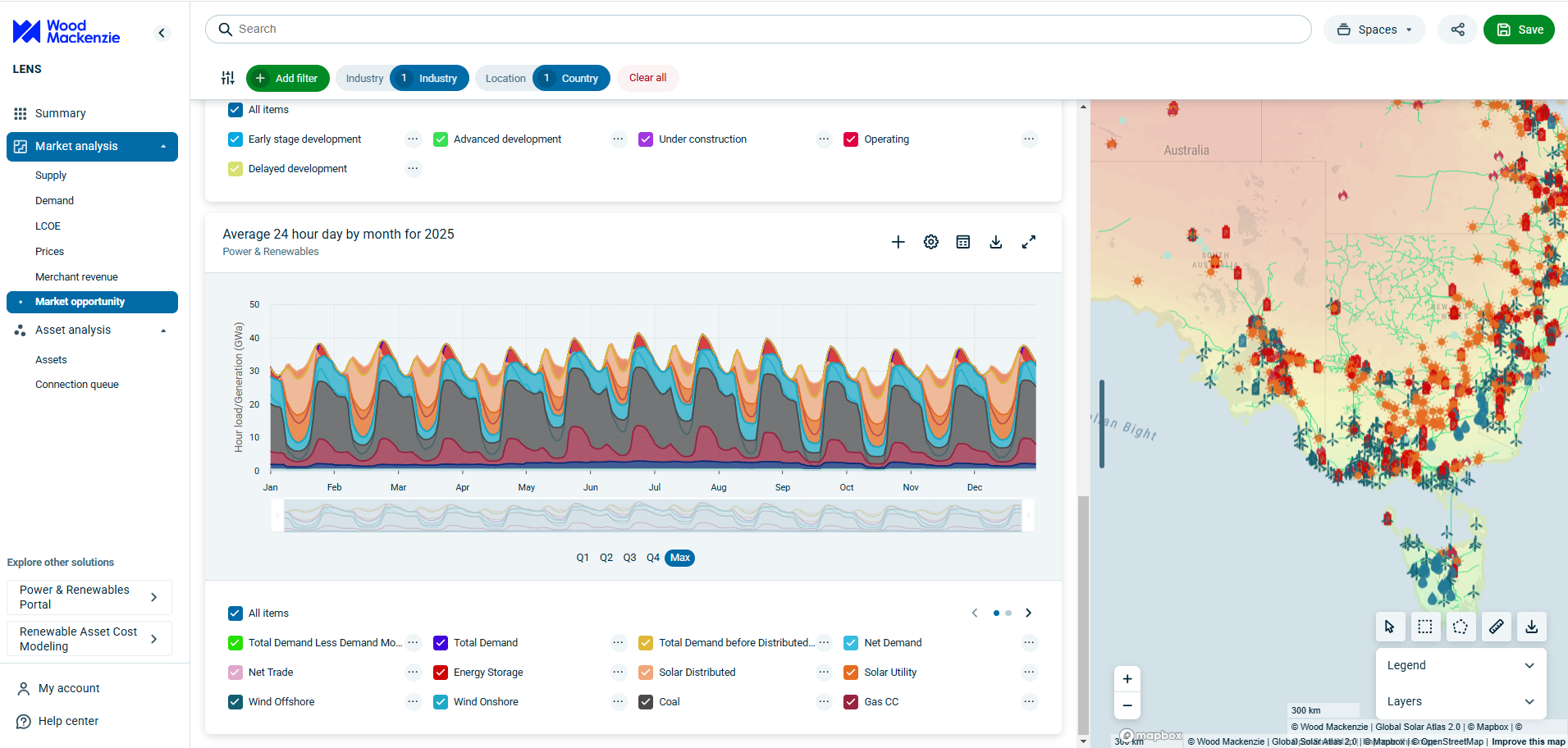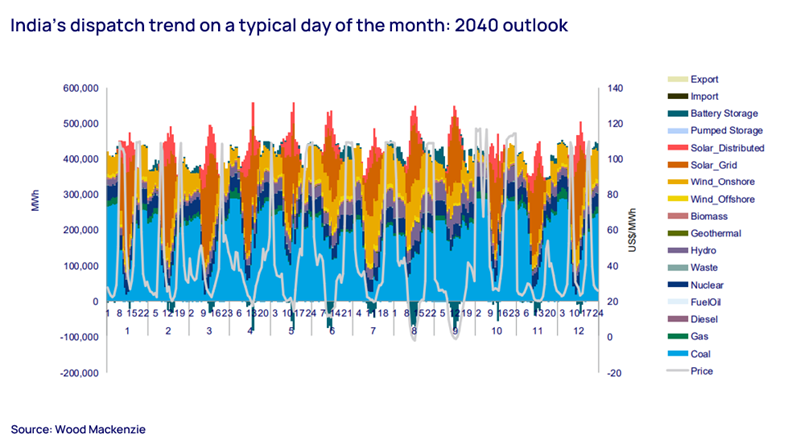Navigating India’s evolving power market: capitalising on the renewable revolution
India ranks third globally in renewable energy installation and is working towards the ambitious target of non-fossil fuel supply of 500 GW by 2030
4 minute read
Rashika Gupta
Vice President, Power and Renewables Research

Rashika Gupta
Vice President, Power and Renewables Research
Rashika leads our South Asia Power & Renewables team, while also heading the APAC power modeling team.
Latest articles by Rashika
View Rashika Gupta's full profileIndia has big ambitions to transition its energy supply from fossil fuels to renewable energy (RE) by 2030 and beyond. Although coal remains the dominant fuel in the current energy mix, the transition to renewables is evident and being driven by falling costs and climate commitments.
By 2050, renewable energy will account for 57% of India’s generation mix - up from 30% in 2030. Wind and solar power combined will contribute 21% of total power generation by 2030 and 51% by 2050. Fill in the form to download the slides from our Navigating India’s evolving power market presentation or read on for highlights.
Room for green growth
The acceleration behind the transition is strong government incentives and strategic plans. While the top six players own and operate about 22% of the total installed renewable capacity (including hydro) and about 130 GW of pipeline capacity, there is a shift towards a more competitive, auction-based framework that is shared between central and state authorities.
Central government tenders accounted for over 52% of renewable auctions in 2024, reflecting a focus on large-scale projects like solar, hybrid and storage. Going forward, the government has set up a 50 GW annual bidding plan until 2028 to tender 40 GW of solar, hybrid and round the clock (RTC) projects, along with 10 GW of wind. This structured bidding will give developers long-term financial planning stability and supply chain management.
Considering India's 500 GW renewable target will be met by 84% of wind and solar, there are many opportunities for investors in these emerging technologies. As the total capacity share of coal and gas falls from 55% in 2023 to 42% in 2030, renewables will increase from 42% to 52% in the same period.
Opportunity in a five-pronged approach
The introduction of policies which improve competition and promotes scaling and integration of RE resources, underpins a five-pronged systematic approach to India’s transition. These five key areas are: cleaning of supply; infrastructure strengthening; efficiency improvements; technology adoption and market liberalisation.
1. Cleaning of supply
This includes mandatory washing of domestic coal travelling more than 500km and mandatory biomass blending in coal plants.
2. Infrastructure strengthening
Schemes to improve rural electrification are underway and strengthening of the national smart grid and transmission network from renewable energy zones is ongoing.
3. Efficiency improvements
Ultra-super critical technology will be mandatory in new coal builds and a revamped distribution sector scheme (RDSS) will improve grid efficiency and reduce transmission and distribution losses.
4. Technology adoption
Policies for the adoption of new technology and clean fuels will be introduced, and investments and production linked incentive (PLI) schemes will boost domestic manufacturing of solar modules, electrolysers, etc.
5. Market liberalisation
Market reforms to improve competition and promote renewable energy, include:
- Green open access
- Uniform renewable energy tariff
- Carbon markets
- The draft Electricity Act to improve retail competition
- A draft policy for market based economic despatch
Sector focus on growing demand
India is the third largest electricity market globally, but electricity consumption per capita remains low at about 1200 kWh. This is set to almost triple by 2050 as the growing middle class and industries increase wealth and consumption. Around 50% of demand comes from the commercial and industrial segment, followed by the domestic sector, while three regions constitute about 85% of total demand.
To meet this, government schemes and subsidies support the promotion of RE sources across the value chain: manufacturing, generation, transmission and distribution.
- Supply chain (manufacturing): Budgetary allocation for the PLI scheme for solar equipment manufacturing has a total outlay of US$2.45 billion. This aims to boost local solar manufacturing and reduce import dependence. This is supported by a customs duty on imported solar cells and modules which came into effect in April 2022, and a domestic content requirement (DCR) which mandates solar PV cells and modules are sourced domestically.
- Generation: The government has focused on policies that provide easier permitting, subsidies to farmers who produce solar power and ultra mega power projects (UMPP) to facilitate a quicker build-up of large plants through a plug-and-play model. As auctions are done through central government agencies, this reverse bidding gives developers more payment security.
- Storage: New tenders support a growing battery energy storage services (BESS) pipeline as India transitions from an RTC framework to firm and dispatchable renewables (FDRE). It is estimated that India's BESS capacity will reach 2 GW by 2025 - a ten-fold increase from 2024. The national programme on advanced chemistry cell (ACC) battery storage is focused on boosting domestic manufacturing and battery storage demand creation along with the development of a complete domestic supply chain.
- Transmission and open access: To facilitate renewable power evacuation and reshape the grid for future requirements, the green energy corridor (GEC) projects were initiated to evacuate about 40+ GW of RE capacity. The green open access rules and registry promotes the purchasing of green energy by consumers and provides a transparent platform through which long term, medium term and short-term open access transactions will be managed and performed to inter- and intra- state transmission systems.
Learn more
Fill in the form at the top of the page to receive a complimentary download of our Navigating India’s evolving power market presentation, which shows in more detail how your business can capitalise on India’s renewable revolution.







